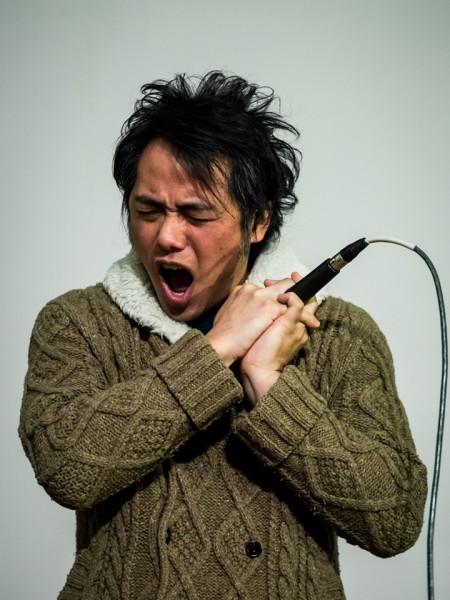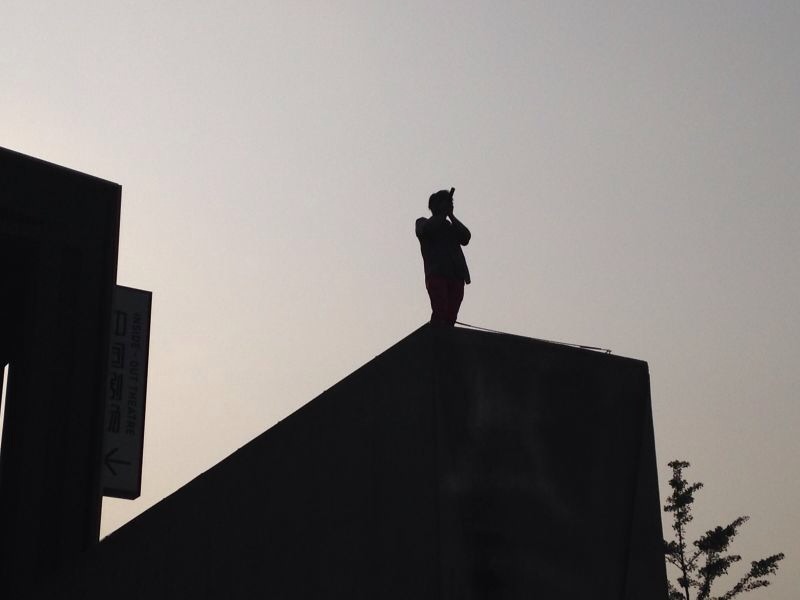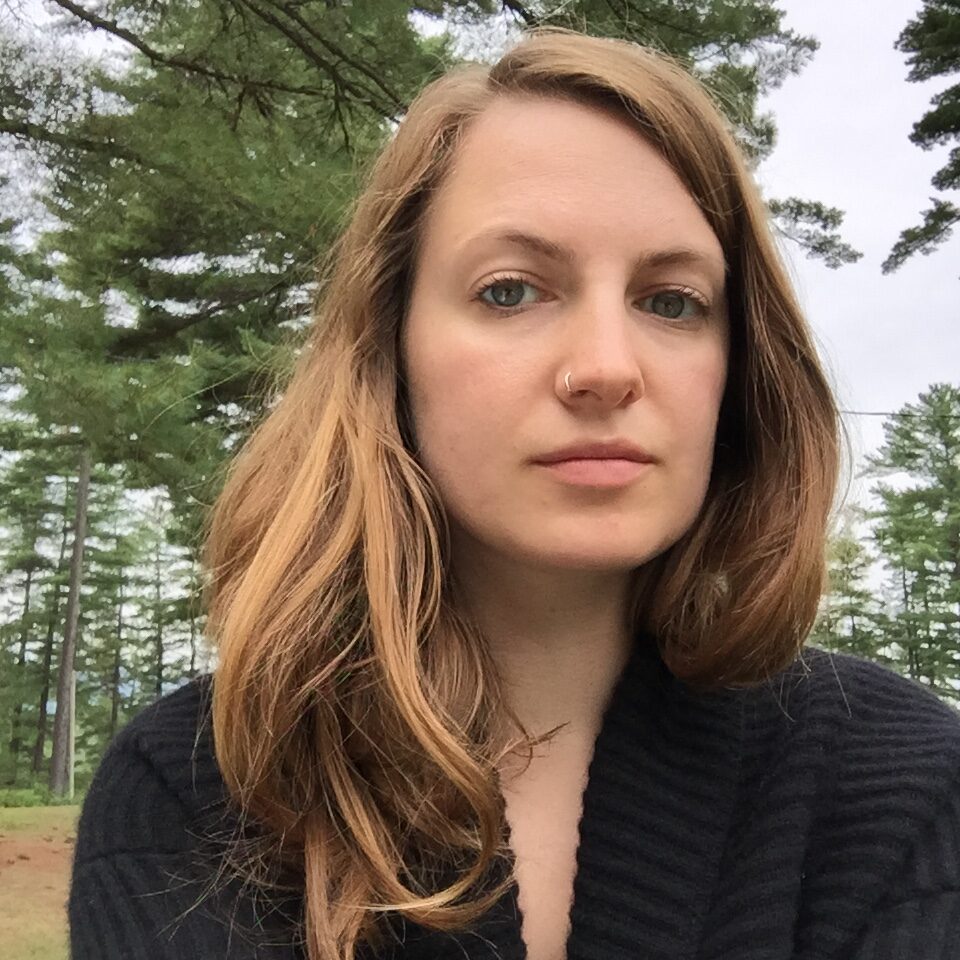by Jenna Crowder
“Music exists as memory,” Ken Ueno tells me, thinking of all the concerts and performances he’s attended with a sense of “cumulative gestalt”, rather than as individual moments. For him, art and life also exist as memory, and “it is contingent upon artists to create heightened moments to take with them, as one does with a memorized poem, to continue to contemplate and give solace. Even though the piece is ephemeral, it will live on.”
The piece Ueno is referencing is Fortress Brass, the third and final installment of A Long Wait, an event and performance series on Fort Gorges curated by Erin Colleen Johnson. Ueno is a composer, vocalist, and sound artist based in Berkeley, California, whose work spans compositions for orchestras, solo voices, and ensembles to opera to collaborative audio installation. For Fortress Brass, he is bringing sixteen brass musicians out to the Fort, including soloists Philippe Brunet (trumpet) and Weston Olencki (trombone), to act as “an aesthetic army of unbellicose musicians with the hope that, though performing viscerally stunning music, they might permanently replace those that are armed with weapons.”
Fortress Brass is a site-specific musical event in two movements. For the first movement, the “Prelude”, Ueno has planned for boats of instrumentalists to “intercept” the water taxi headed out to the performance, performing for the passengers a twelve-minute fanfare and activating Casco Bay in addition to the Fort. “The journey is an important part of the piece,” he says.

To illustrate how important the journey can be, Ueno tells me that he recently traveled to Greece for Temenos 2016 to see the premiere Gregory Markopoulos’ ENIAIOS IX – XI, three parts of an 80-hour silent 16mm film shown over three days near the village of Lyssarea1. Every day for three days, he traveled by bus from Lyssarea to an open field set up with a screen against a background of stars. He also mentions Christo’s Floating Piers 2 in Italy and how the process of waiting in line, of working through crowds, of finally stepping out onto the piers, all informed the experience and the art itself: “The weight of the journey is part of the pilgrimage.”
The hour-long second movement of Fortress Brass takes place at Fort Gorges itself, where the musical structure is informed heavily by the architecture. When Ueno looked at the photos of the fort that Johnson sent him, he noticed that one side of the fort consists of a half-panopticon of gun casemates all pointing inwards; the other side a flat wall. Sixteen of the thirty-two casemates will be articulated by spacial counterpoint — a brass instrument, trumpet or trombone, stationed individually at the archways, and “in this way, the musicians are optimized for antiphonal, stereo-like effects.” The wall, while untested, will hopefully broadcast an echo of the brass into the space. Ueno says he is interested in considering architecture as part-instrument and wants to use Fortress Brass to collaborate with the Fort and align the composition with the trajectory of the Fort’s history.
I originally imagined that the use of the brass was a specific reference to the Fort’s (unrealized) military history; Ueno attended West Point and the link to military bands seemed straightforward. This turns out to be somewhat incorrect — while speaking with Ueno, Olencki pops in to correct my instrumental history, citing simpler instruments like bugles, drums, and bagpipes. He mentions that in English tradition, brass instruments specifically have a history of competition, virtuosity, and showmanship; for example, the trumpet has quite a regal connotation and the French Horn was developed alongside English hunting. What’s interesting about Fortress Brass, Olencki offers, is that this performance is a much more generous, much more experimental in its use of brass within the architectural language of war.
Ueno specializes in extended vocal techniques, like throat singing. In his early twenties, Ueno heard Tuvan throat singing, a type of overtone singing practiced by people of Mongolia, and decided he wanted to learn it himself, recalling it as “irrational, as all great loves are.” He worked this into compositions for himself, creating autobiographical pieces linking all the way back to tapes he’d made when he was six — it wasn’t until he started practicing throat singing (at first “in private and resonant spaces like cars and showers”) that he understood he’d been creating multiphonics as a child. For Fortress Brass, Olencki and Brunet will both be performing multiphonics on brass and Brunet also throat sings. Ueno will be performing several solos, as will Olencki and Brunet, interlaced with passages from the full ensemble throughout the piece.
Fortress Brass will be performed on Saturday, July 23, 2016, as the final installment of A Long Wait.
Tickets for this performance are sold out, but if you make your way to Fort Gorges around 1:30pm by kayak, personal boat, or water taxi, you may be able to catch the first movement on the water and the second movement inside the Fort. (If you go on your own, the curator suggests a donation to the artist.)
For more information, including the ferry and event schedule, as well as information on other events in this series, please visit http://alongwait.com/.
Jenna Crowder, Co-Founding Editor at The Chart, is an artist, writer, and editor. Her writing has been published in The Brooklyn Rail, Art Papers, BURNAWAY, Temporary Art Review, The Rib, Liminalities: A Journal of Performance Studies, and VICE Creators Project, among other places.


